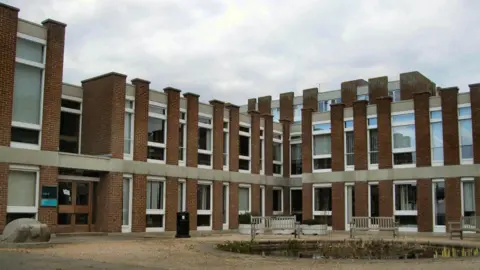University of Sussex to replace Raac concrete
 Paul Gillett
Paul GillettThe University of Sussex has been given permission to replace potentially dangerous concrete in a Grade II listed building on its Falmer campus.
Brighton & Hove City Council has granted listed building consent to replace the Raac (reinforced autoclaved aerated concrete) in Arts Building A, which also suffers from other problems including leaks.
The university commissioned a survey of 27 buildings three years ago and found Raac in seven of them.
The university intends to remove the concrete panels from the first-floor office, corridors and balcony and replace them with a new timber floor, glazed panel and zinc roof to the balcony.
The Falmer campus includes several Brutalist concrete buildings designed by the architect Sir Basil Spence and constructed in the 1960s and 70s.
The use of Raac was widespread at the time because it made concrete panels lighter, but it only has a 30-year lifespan, according to the Local Democracy Reporting Service.
In a report to the council, the university said the concrete had deteriorated due to "continuous exposure to moisture".
"This results in leaching of its structure, cracking and loss of structural integrity," it added.
"The Raac planks are past the end of their viable life and pose a risk of brittle failure when traversed."
The university is replacing Raac across the campus, with the first phase completed in April 2024 at Bramber House.
Follow BBC Sussex on Facebook, on X, and on Instagram. Send your story ideas to [email protected] or WhatsApp us on 08081 002250.
